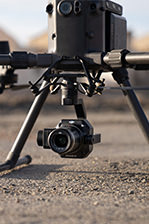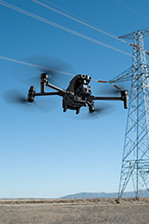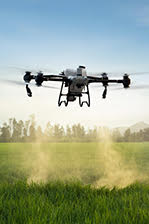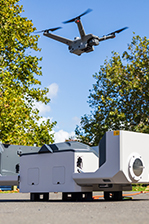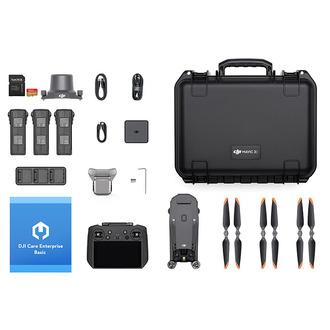Global Mapper Pro GIS Software (LiDAR)
Global Mapper Pro is the ultimate application for surveyors wanting to create 3D maps from data collected by LiDAR enabled drones.
Features
Equally well suited as a standalone spatial data management tool and as an integral component of an enterprise-wide GIS, Global Mapper is a must-have for anyone who works with maps or spatial data.
Low-cost and easy-to-use interface
Global Mapper supports more than 300 geospatial data formats
It offers a complete suite of data creation and editing tools
Provides a cutting-edge 3D visualization and analysis
Ongoing technical support
Extensive Format Support
Global Mapper is more than just a utility; it offers a surprisingly extensive collection of analysis and data processing tools in a truly affordable package. Providing support for virtually every known spatial file format as well as direct access to common spatial databases, this remarkable application can read, write, and analyze virtually all spatial data.
Easy and Affordable
Global Mapper’s intuitive user interface and logical layout helps smooth the learning curve and ensures that users will be up-and-running in no time. Companies and organizations of any size will quickly see a significant return on investment brought about by efficient data processing, accurate map creation and optimized spatial data management.
Terrain Analysis and 3D Data Processing
With a particular emphasis on terrain and 3D data processing, Global Mapper’s out-of-the-box analysis functions include view shed and line-of site modelling, watershed delineation, volume measurement and cut and fill optimization, raster calculation, customized gridding and terrain creation, contour generation, and much more. Complementing this core functionality, the optional LiDAR Module provides a wide array of point cloud processing tools including automatic point classification, feature extraction, and the powerful Pixels-to-Points tool for photogrammetric point cloud creation.
Vector and Raster Processing
Complementing these powerful analysis tools is Global Mapper includes a complete suite of raster and vector data creation and editing functions offering everything from simple and intuitive drawing to image rectification and vectorization. Global Mapper The software also includes numerous attribute editing functions as well as intuitive data display and thematic mapping capabilities.
Data Sharing
When the time comes to share map data, Global Mapper offers numerous options including eye-catching page layout and printing tools, geospatial PDF creation, and direct web publishing to MangoMap, an affordable and easy-to-use online map service.
Lidar Module
A new tool for creating a 3D model surface from selected LiDAR points
Support for spatially thinning a LiDAR or point cloud layer
A new raster eyedropper tool for selecting a color for transparency assignment or vector extraction
A new option for extracting buildings from LiDAR as 3D models rather than 3D vector features
A new tool for gridding LiDAR Data by Classification
Offering access to an unparalleled variety of spatial datasets, Global mapper provides a high level of functionality to satisfy both the experienced GIS professionals and beginning users. Global mapper can be used as a standalone spatial data management tool or as an integral component of an enterprise-wide GIS.
Pixels to Points
Using an array of overlapping images, such as those collected using a drone, the Pixels to Points tool generates a high-density point cloud based on user-selectable parameters. Employing the principles of photogrammetry in which measurements are derived from photographs, the Pixels to Points tool analyzes the relationship between recognizable objects in adjacent images to determine the three-dimensional coordinates of the corresponding surface. As a by-product of the point cloud generation capability, the Pixels to Points tool also offers the option of creating an orthorectified image by gridding the RGB values in each point, as well as a 3D Mesh, complete with photorealistic textures.
The processing of creating the point cloud begins with a simple loading of the images into the Pixels to Points dialog box. For optimal results, at least 60% overlap and evenly distributed photos taken from varying angles are recommended. Individual images can be previewed and those not needed for the final point cloud can be removed. Various settings can then be applied to determine the output quality, analysis method, etc. Finally, ground control points may optionally be added to adjust the horizontal and vertical positioning of the point cloud. After processing is complete, the point cloud will be automatically added to the current workspace. It can be further processed or edited before exporting to any of the supported point cloud formats including LAS and LAZ.
The Pixels to Points process is memory intensive and may take several hours to process depending on the input data and quality setting. It is recommended that this process is performed on a dedicated computer with at least 16GB of RAM. The Pixels to Points tool also requires a 64-bit operating system.
Mesh or 3D Model Creation
Using a selected group of lidar points, this process uses the inherent 3D geometry of the points along with the associated colors if present and creates a 3D mesh or model. When viewed in 3D, this model displays as a multifaceted photo-realistic 3D representation of the corresponding feature. This process produces a similar output to the model creation option in the Pixels to Points tool.
Manual Classification
The Lidar Module includes a convenient toolbar to streamline the classification of selected points with a single button click. This toolbar includes buttons for the most common classification types including ground, vegetation, and buildings. Additionally, selected points can be manually edited and assigned to any of the ASPRS lidar classification types using the Digitizer’s edit function.
Automatic Classification
Based on the geometric properties and other characteristics of the lidar file or point cloud, the Lidar Module’s automatic reclassification tool is able to accurately identify and automatically reclassify points representing the important point feature types. First and foremost is the identification of ground points, which is used for the creation of a DTM or bare-earth model. Within the remaining above-ground points, specific algorithms can be applied to identify and reclassify high vegetation, buildings, and powerlines.
Lidar QC
The Lidar Module offers a tool for verifying the vertical accuracy of a point cloud. Using surveyed ground control points, the elevation values throughout the layer can be checked and adjusted if necessary.
Advanced Lidar Filtering
Points can be filtered using a variety of criteria and at various stages during the point cloud processing workflow. During import, points can be filtered based on classification, return count, sample count, or based on their geographic distribution. The same filtering options can be used to filter the display of points in the map view. When creating a gridded surface or a DEM, a further level of filtering is available which can be used to remove points based on elevation range, classification, intensity, color, or on many other point cloud characteristics.
Noise Removal
Addressing a major concern among lidar users, Global Mapper Lidar Module provides an efficient and effective way to remove noise from point cloud data. This powerful filtering tool can reclassify or automatically delete any points that are beyond a prescribed elevation or height above the ground threshold within a local area.
Lidar Querying
The Lidar Module includes numerous tools for querying points based on both the point cloud attributes and on their geographic distribution. The Search function can be used to create a multi-level query of point classification, elevation range, intensity, or any of the other variables. Spatial querying options include identifying points contained within a selected polygon or points that are within a defined distance of a certain type of point type or line feature. This function is ideally suited for encroachment detection.
Lidar Thinning
Using a set of customizable parameters, this tool reduces the number of points in a point cloud resulting in a more manageable file size while eliminating redundancy. This thinning process can be applied consistently across the 2D extent of the layer or it can vary to reflect the 3D distribution of points.
Automatic Extraction of Buildings, Trees, Power Poles and Powerlines
One of the Lidar Module’s most powerful capabilities, the feature extraction tool is used to create a vector (point, line, or polygon) features derived from appropriately classified points. Based on a series of customizable settings, patterns of points representing buildings, trees, poles, and utility cables are analyzed and their extent is automatically delineated as a series of 3D vector objects or, in the case of buildings, as a 3D mesh.
Custom 3D Digitization and Feature Extraction
Using the Perpendicular Path Profile function, a series of custom spaced cross-sectional views are created perpendicular to a defined path through a point cloud. 3D vertices can be quickly and accurately placed at regular intervals within each successive profile view. When the sequence is complete, either a 3D linear or area feature is created using Global Mapper’s standard Digitizing tool. This is an ideal tool for delineating curbs, utility cables, pipelines, drainage ditches, or building rooflines from high-resolution point cloud data.
Point Cloud Visualisation
The display of points can be adjusted to reflect many of the attributes within the point cloud, including:
Elevation
Intensity
Classification
Return Number
Height Above Ground
Point Source ID
NDVI/NDWI (when NIR attribute is present)
Point Density
When overlaid on a raster or gridded layer, the RGB or NIR value from each underlying pixel can be added to the associated point.
Advanced DEM Creation
The Lidar Module provides numerous options for creating a surface model. Supplementing the simple triangulation (TIN) process, binning offers a more efficient and customizable way to create DTM or DSM of a specific resolution. Hydro-flattening allows the inherent elevation values associated with 3D vector lines or polygons to override the point-based elevations when modeling water bodies or streams.
Path Profile Rendering and Editing
The module enables the display of a section of a point cloud in the Path Profile view. This lateral perspective is initially created by establishing a swath width to ensure that sufficient points are displayed for the area of interest. The lateral perspective is ideally suited for manual point selection and editing as it clearly distinguishes points that are vertically offset from those in the surrounding area.
Additional File Format Support
E57 lidar format support
Leica PTS point cloud file support
Global Mapper (Perpetual)
The specific version of Global Mapper you license from Blue Marble may be used indefinitely as the license file delivered is perpetual. Once the license file has been delivered to activate the software on the target machine, there are restrictions on the frequency in which you may move the software to additional machines. For the first year after purchase, upgrade, or renewal of maintenance and support, this perpetual license entitles the customer to download all released versions of the software and to receive technical support. After one year has passed since the last purchase, upgrade, or renewal of maintenance and support, the license may be upgraded by purchasing maintenance and support. Please contact our sales team for more information on the latest upgrade rates.
In the box
Global Mapper x 1
Global Mapper Lidar Module x 1
WHY BUY FROM US?
By buying from Ferntech, you'll have the confidence that you are dealing directly with New Zealand's leading drone experts. Our staff are knowledgable drone pilots who offer expert advice, trusted support and superior specialist service. Only through us will you receive a full New Zealand warranty, phone and email support, and access to our certified Repairs Centre with DJI-qualified drone technicians. And we guarantee that we will have the best prices on the market — if not let us know and we will match any price (conditions apply).
Warranty Details
There's currently no reviews for this product, be the first to write one.









